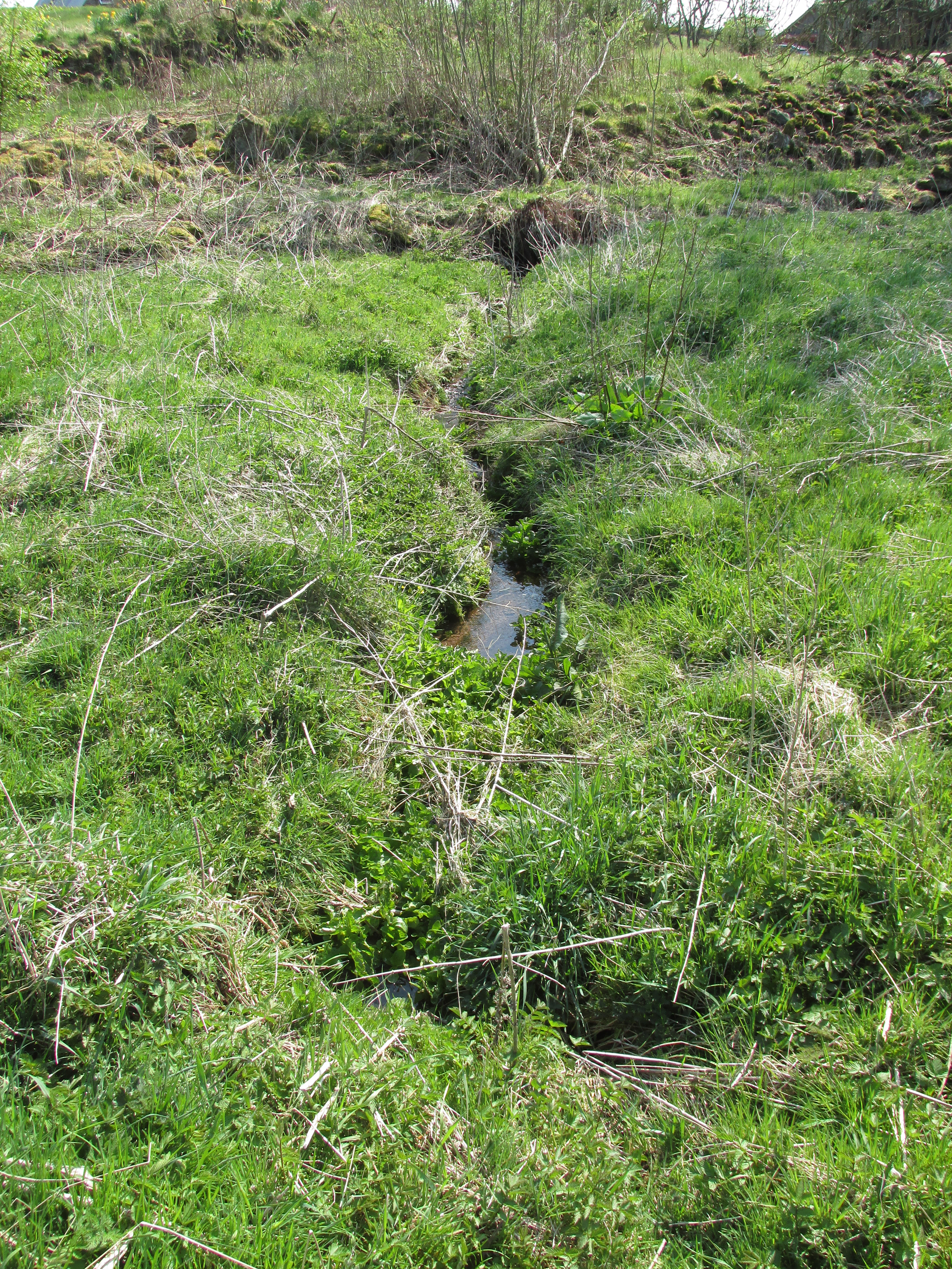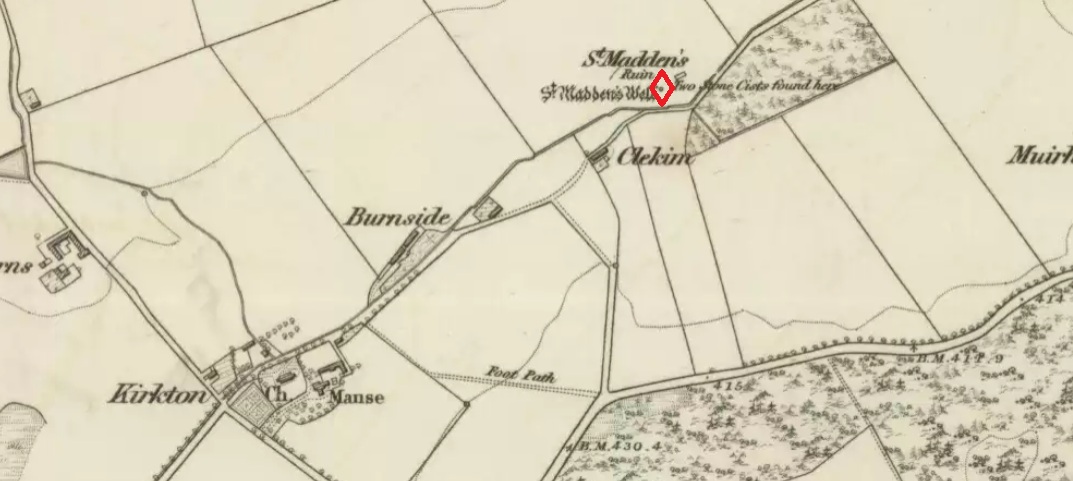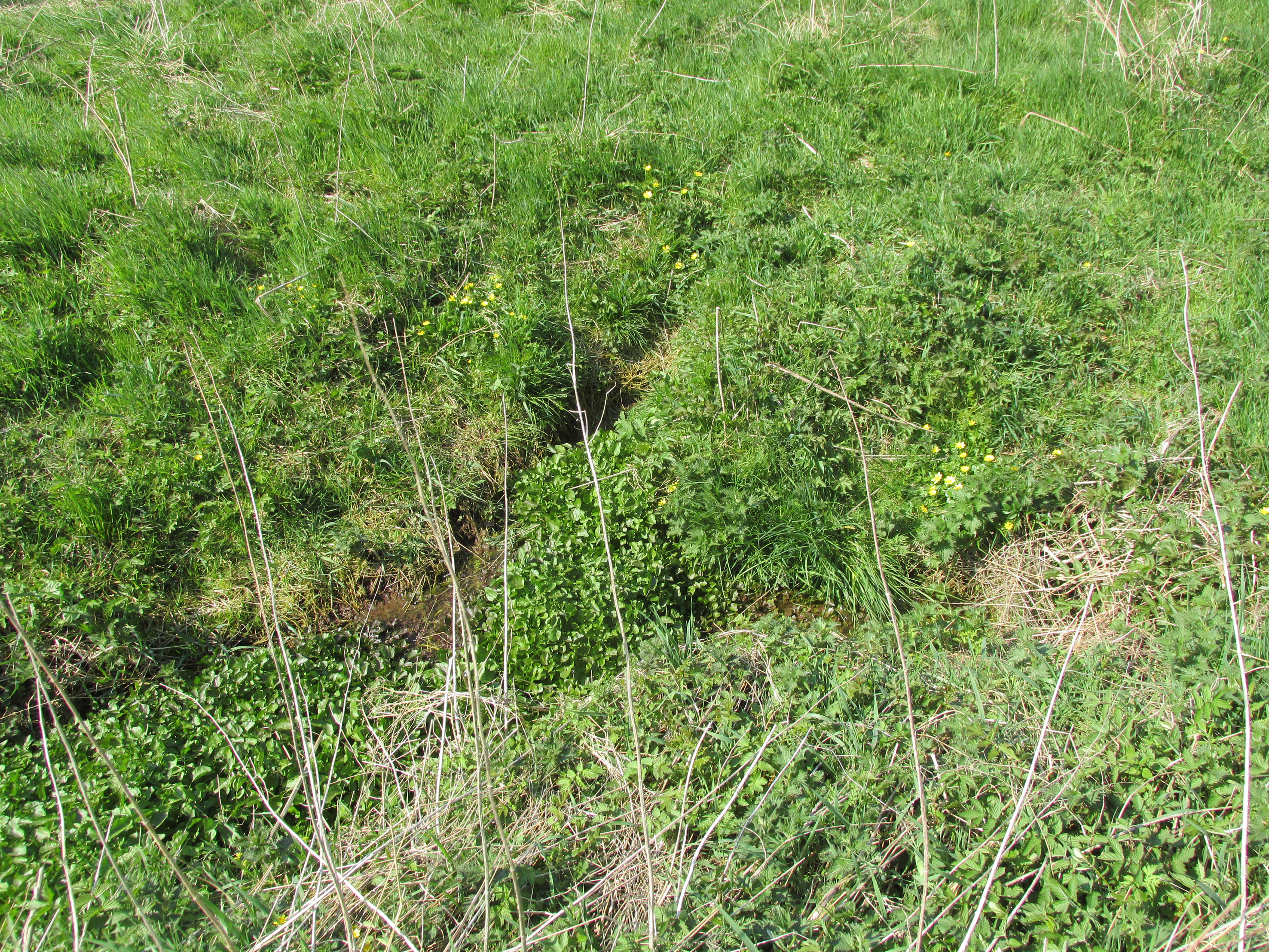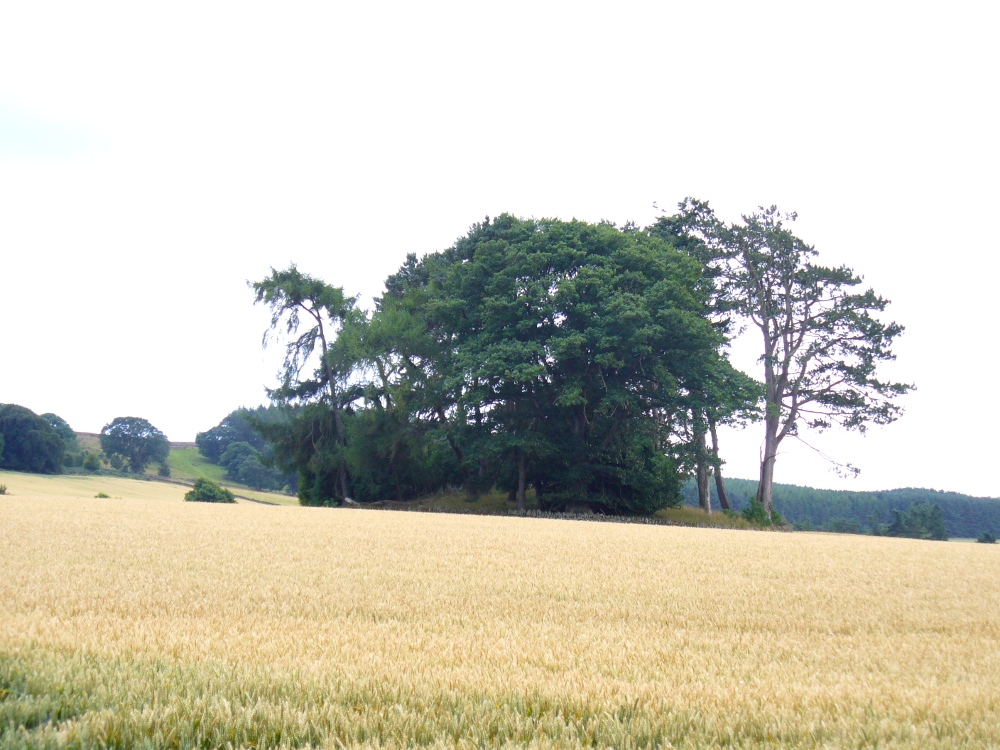Souterrain (destroyed): OS Grid Reference – NO 3102 5187
Also Known as:
- Airlie IV (Wainwright)
- Canmore ID 32383
Archaeology & History
This was one amongst a good cluster of souterrains that existed hereby, remains of which may still exist beneath the ground. It was rediscovered in the 19th century through a series of most curious events—owing more to the local belief in spirits and witches than any archaeological rationale. Mr A. Jervise (1864) told the story in his essay on Airlie parish:
“The circumstances which led to the discovery of one of these weems is curious. Local story says, that the wife of a poor cottar could not for long understand why, whatever sort of fuel she burned, no ashes were left upon the hearth; and if a pin or any similar article was dropt at the fireside, it could not be recovered. Having “a bakin” of bannocks, or oatmeal cakes, on some occasion, one of the cakes accidentally slipped from off “the toaster,” and passed from the poor woman’s sight! This was more than she was prepared for; and, believing that the house was bewitched, she alarmed her neighbours, who collected in great numbers, and, as may be supposed, after many surmises and grave deliberation, they resolved to pull down the house! This was actually done: still the mystery remained unsolved, until one lad, more courageous and intelligent than the rest, looking attentively about the floor, observed a long narrow crevice at the hearth. Sounding the spot, and believing the place to be hollow, he set to work and had the flag lifted, when the fact was disclosed, that the luckless cottage had been built right over an “eirde” house. The disappearance of ashes, and the occasional loss of small articles of household use, were thus satisfactorily accounted for; but, unfortunately, although the site of this weem remains, as well as that of another near the same place, both were long ago destroyed, and the materials of which they were constructed used for a variety of utilitarian purposes.”
Or to put it simply: right beneath the fireplace, a small opening into the souterrain below appeared, into which all things fell. F.T. Wainwright (1963) placed the position of the site “about 100 feet east of the road between Barns of Airlie and Brae of Airlie, about 200 yards from the former.” On the 1865 OS-map, this spot is marked with a small unnamed building. No excavation has ever been tried here
References:
- Jervise, A., “Notice of Antiquities in the Parish of Airlie, Forfarshire,” in Proceedings of the Society of Antiquaries, Scotland, volume 5, 1864.
- Wainwright, F T., The Souterrains of Southern Pictland. RKP: London 1963.
© Paul Bennett, The Northern Antiquarian



